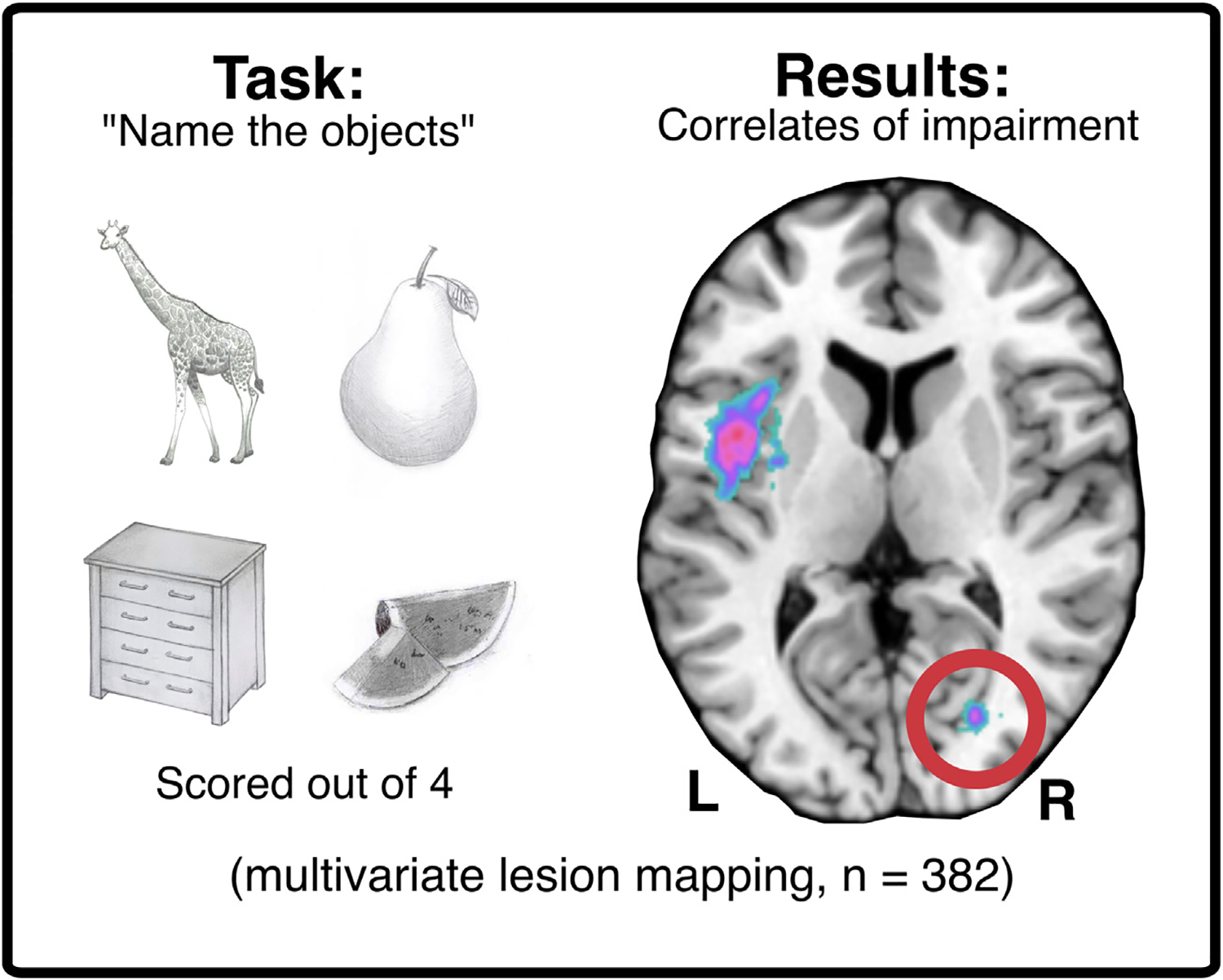Fig. 4 –

A real-world example of multivariate lesion mapping yielding significant correlates which are not directly related to the function of interest (language). Acute stroke survivors (n = 382) completed the Oxford Cognitive Screen picture naming task (Demeyere et al., 2015). Sparse canonical correlations (multivariate lesion mapping, Pustina et al., 2018) were then applied to identify neural correlates of poor performance. The significant cluster in the left fronto-temporal region aligns with areas traditionally associated with language function, whereas the highlighted cluster in the posterior right hemisphere is associated with visual function (Moore & Demeyere, 2022). This example illustrates how the outcomes that yield the best-fitting models in multivariate lesion mapping may not always provide helpful insight into function. The “false positive” correlates in this example are easily identifiable via visual inspection, but this may not always be the case for more complex or poorly understood functions.
